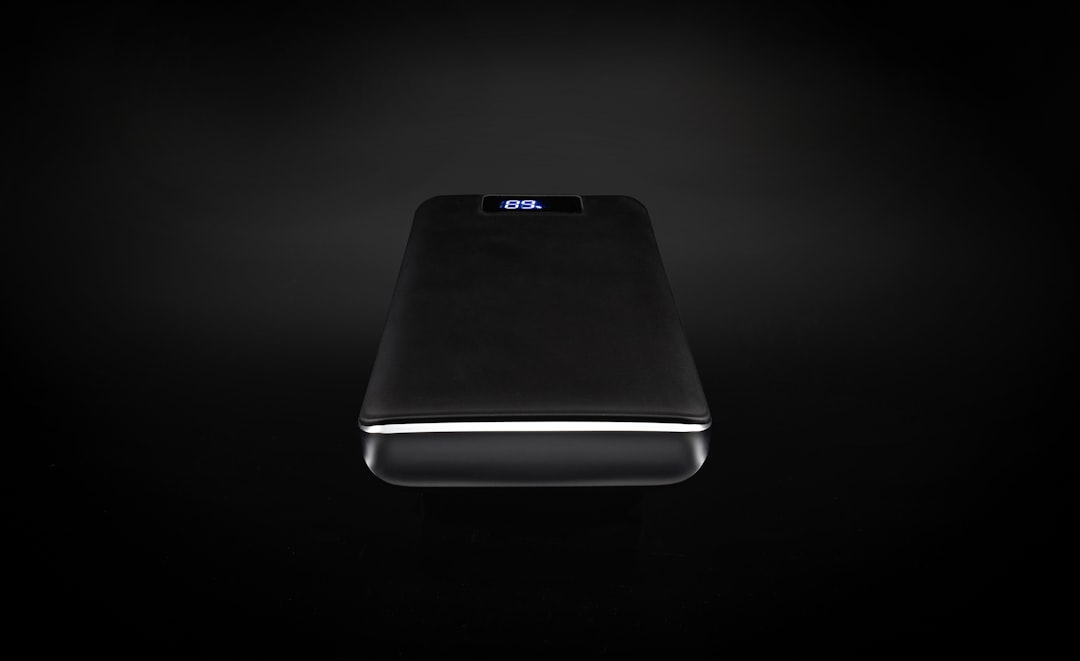52 volt battery chart is essential for anyone seeking to understand battery power, charge relationship, and solar setups. A 52V battery is commonly used in many eco-friendly transportation solutions like eBikes and solar power systems. Here’s a quick overview of what to expect when looking at a 52 volt battery chart:
- 100% Charge: 58.8V
- 75% Charge: 54.6V
- 50% Charge: 50.4V
- 25% Charge: 46.2V
- 0% Charge: 42V
Understanding how your battery’s voltage decreases as its charge depletes helps you make informed decisions on how many appliances you can power. Mismanagement can lead to battery depletion and reduced capacity over time.
Transitioning to solar power? Knowing this relationship is crucial. Solar setups rely on battery health to store and efficiently use power when sunlight isn’t available. By mastering the 52 volt battery chart, you effectively manage consumption and prolong your battery’s lifespan.

Understanding Voltage and Charge
The Relationship Between Voltage and Charge
Voltage is the pressure from a circuit’s power source pushing electrons through a loop, while charge is a physical property that affects an object’s ability to provide power. In simple terms, voltage is the work done per unit charge.
Imagine water flowing through a pipe. Voltage is like the water pressure, and charge is the amount of water. More pressure means more water can flow. In an electric circuit, this means higher voltage allows more charge to move, powering more appliances.
Charge and voltage have a directly proportional relationship. If the voltage is 10V, the charge will be 10C (Coulombs). This means that as the voltage of a battery decreases, so does its charge. Lower charge means less power available for your devices.
Importance of Voltage and Charge Relationship
Knowing the relationship between voltage and charge is crucial for managing your power consumption. Here’s why:
-
Appliance Power: Understanding your battery’s voltage helps you know how many appliances you can power. Overloading can cause your inverter to overexert, leading to battery depletion.
-
Inverter Overexertion: When you push your inverter too hard, it drains the battery faster. Doing this frequently reduces the battery’s ability to charge fully over time.
-
Battery Depletion: Consistently draining your battery can lead to reduced capacity. This means your battery won’t last as long or power as many devices as it used to.
For example, if you have a 52V battery and you frequently let it drop below 20% charge, you risk shortening its lifespan.

In solar power setups, understanding this relationship is vital. Your solar panels charge the batteries, which then power your home when the sun isn’t shining. Mismanagement can lead to inefficient power usage and quicker battery degradation.
By mastering the 52 volt battery chart, you can effectively manage your power consumption, ensuring your batteries last longer and perform better.
52V Battery Voltage Chart
Full Charge Voltage
A 52V battery doesn’t just stop at 52 volts when fully charged. In fact, a fully charged 52V lithium-ion battery reaches up to 58.8V. This is because each of the 14 cells in the battery pack charges to 4.2 volts.
Here’s a simple breakdown:
- 14 Cells x 4.2V per Cell = 58.8V Fully Charged
This higher voltage at full charge is crucial for maximizing the battery’s performance and ensuring you get the most power out of it.
Voltage at Different Charge Levels
As your battery discharges, the voltage drops. Monitoring this voltage helps you understand how much charge is left and maintain your battery’s health.
Below is a 52V battery voltage chart showing the voltage at different charge percentages. This helps you keep track of your battery’s health and performance.
| Voltage (V) | Charge Percentage (%) |
|---|---|
| 58.8 | 100 |
| 58.6 | 99 |
| 58.5 | 98 |
| 58.3 | 97 |
| 58.1 | 96 |
| 58.0 | 95 |
| 57.8 | 94 |
| 57.6 | 93 |
| 57.5 | 92 |
| 57.3 | 91 |
| 57.1 | 90 |
| 56.8 | 88 |
| 56.6 | 87 |
| 56.4 | 86 |
| 56.3 | 85 |
| 56.1 | 84 |
| 55.9 | 83 |
| 55.8 | 82 |
| 55.6 | 81 |
| 55.4 | 80 |
| 54.6 | 75 |
| 50.4 | 50 |
| 46.2 | 25 |
As you can see, the voltage decreases as the charge percentage drops. This decrease is a natural part of battery usage.
Why This Matters
Understanding the voltage at different charge levels is key to maintaining your battery’s health. Consistently running your battery at low charge levels can lead to:
- Reduced Capacity: Over time, the battery won’t hold as much charge.
- Shortened Lifespan: The overall lifespan of the battery decreases.
- Performance Drops: The battery won’t power your devices as effectively.
By keeping an eye on the voltage and charge levels, you can ensure your battery remains healthy and performs well. This is especially important for applications like solar power systems and eBikes, where battery performance is critical.

In the next section, we will dive into how this knowledge applies practically in solar power systems and eBike performance.
Practical Applications of the 52V Battery Voltage Chart
Solar Power Systems
A 52 volt battery chart is essential for anyone using solar power systems. Solar panels generate electricity that is stored in batteries. Knowing the voltage of your battery at different charge levels helps you manage your power consumption efficiently.
Battery Degradation: Over time, repeatedly draining your battery to low voltage levels can degrade its capacity. This means it will hold less charge and power fewer devices.
Inverter Management: Your inverter converts the stored DC power into AC power for use. Overexerting your inverter by running too many appliances at once can quickly deplete your battery. Monitoring the voltage helps you avoid this.
Solar Panels: When the sun isn’t shining, your battery’s charge decreases. Keeping track of the voltage ensures you don’t drain the battery too far, preserving its lifespan.
eBike Performance
For eBike enthusiasts, understanding the voltage chart is crucial for estimating range and maintaining battery health.
Range Estimation: Knowing the voltage at different charge levels helps you estimate how far you can travel. For example, a fully charged 52V battery (58.8V) will take you farther than one at 50% charge (50.4V).
Battery Life: Regularly running your eBike at low battery levels can reduce its lifespan. Monitoring the voltage helps you keep the battery in a healthy range, ensuring it lasts longer.
Low Voltage Cutoff (LVC): Most eBikes have a low voltage cutoff to prevent battery damage. For a 52V battery, this is usually around 43V. Understanding your battery’s voltage helps you avoid hitting this cutoff, which can leave you stranded.
By using a 52 volt battery chart, you can better manage your solar power system and eBike, ensuring longer battery life and better performance.
Frequently Asked Questions about 52V Batteries
What is the Voltage of a Fully Charged 52V Battery?
A fully charged 52V battery reaches 58.8 volts. This is because each of the 14 cells charges up to 4.2V (14 cells x 4.2V = 58.8V). This maximum voltage is typical for lithium-ion batteries.
How Long Will a 52V 20Ah Battery Last?
The duration a 52V 20Ah battery will last depends on your power consumption. To estimate range, you can use watt-hour calculations.
Watt-Hour Calculation:
- Watt-hours (Wh) = Voltage (V) x Amp-hours (Ah)
- For a 52V 20Ah battery: 52V x 20Ah = 1040Wh
Range Estimation:
- If your eBike uses 20Wh per mile, then:
- 1040Wh / 20Wh per mile = 52 miles
Your actual mileage may vary based on factors like terrain, rider weight, and riding conditions.
What is the Low Voltage Cutoff for a 52V eBike Battery?
The Low Voltage Cutoff (LVC) for a 52V eBike battery is typically around 43V. This cutoff helps protect the battery from being overly discharged, which can damage it. The battery management system (BMS) in your eBike monitors this and will shut off the battery to prevent it from going below this voltage.
Understanding your battery’s voltage at different charge levels, using a 52 volt battery chart, helps you avoid hitting the LVC and ensures you don’t get stranded.
By knowing these key details, you can better manage your 52V battery’s health and performance.
Conclusion
Understanding and managing your 52V battery’s health is vital for efficient power usage and longevity. By using a 52 volt battery chart, you can monitor your battery’s voltage at different charge levels. This helps you avoid over-discharging and ensures you get the most out of your battery.
Efficient power management involves knowing when to charge your battery and how to use it to power your appliances or eBike. For instance, avoiding frequent discharges below 20% can extend your battery’s life. Always aim to charge your battery just before use and store it at around 40-60% for long-term storage.
Doot Scoot is committed to helping you make informed decisions about your eBike and battery usage. We provide comprehensive guides, expert reviews, and custom solutions for eco-friendly urban mobility.
For more tips and to explore our services, visit Doot Scoot.
By understanding these aspects, you can ensure your 52V battery remains healthy, providing reliable performance for all your urban mobility needs.










